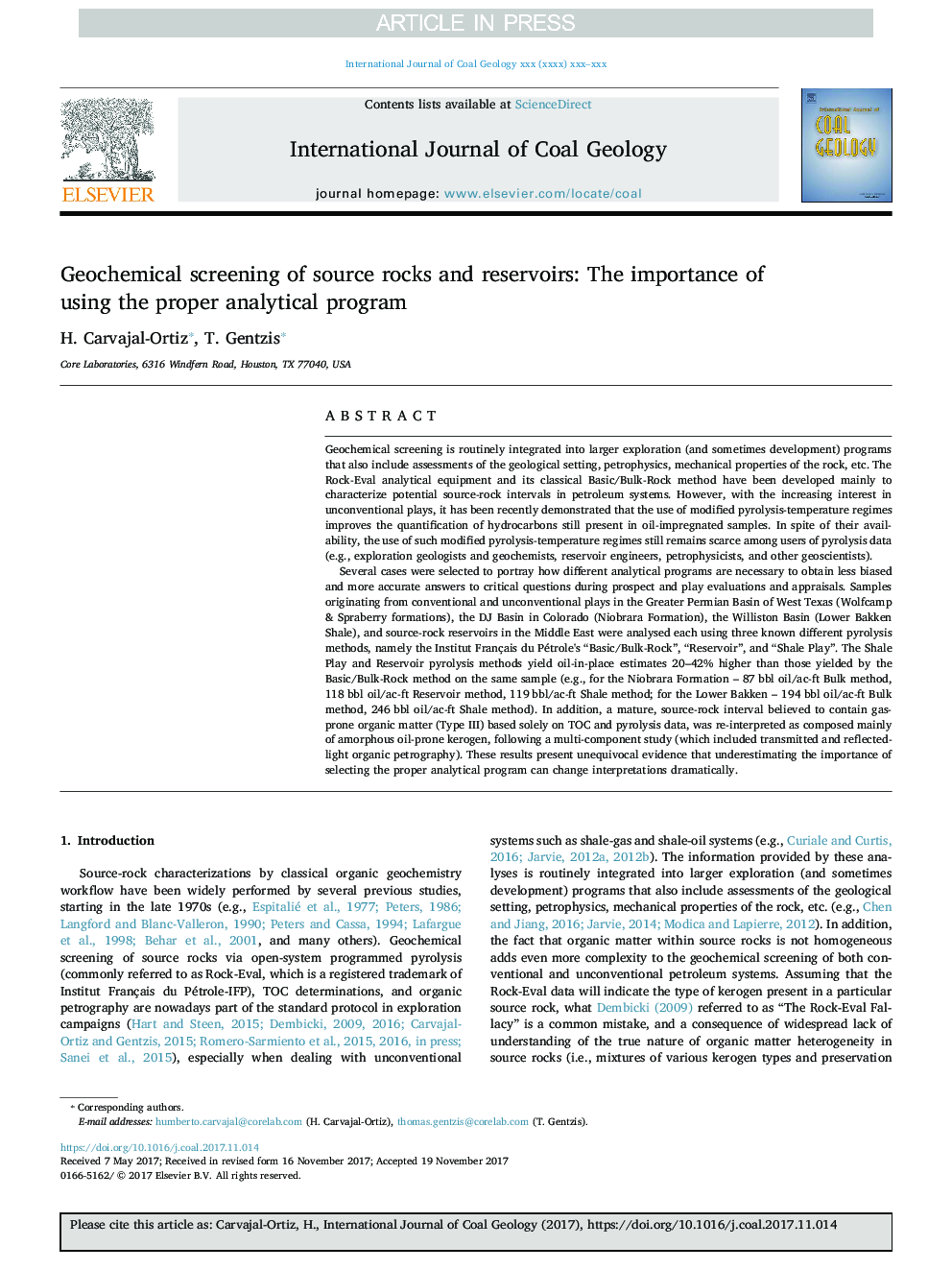| Article ID | Journal | Published Year | Pages | File Type |
|---|---|---|---|---|
| 8123432 | International Journal of Coal Geology | 2018 | 14 Pages |
Abstract
Several cases were selected to portray how different analytical programs are necessary to obtain less biased and more accurate answers to critical questions during prospect and play evaluations and appraisals. Samples originating from conventional and unconventional plays in the Greater Permian Basin of West Texas (Wolfcamp & Spraberry formations), the DJ Basin in Colorado (Niobrara Formation), the Williston Basin (Lower Bakken Shale), and source-rock reservoirs in the Middle East were analysed each using three known different pyrolysis methods, namely the Institut FranÒ«ais du Pétrole's “Basic/Bulk-Rock”, “Reservoir”, and “Shale Play”. The Shale Play and Reservoir pyrolysis methods yield oil-in-place estimates 20-42% higher than those yielded by the Basic/Bulk-Rock method on the same sample (e.g., for the Niobrara Formation - 87Â bbl oil/ac-ft Bulk method, 118Â bbl oil/ac-ft Reservoir method, 119Â bbl/ac-ft Shale method; for the Lower Bakken - 194Â bbl oil/ac-ft Bulk method, 246Â bbl oil/ac-ft Shale method). In addition, a mature, source-rock interval believed to contain gas-prone organic matter (Type III) based solely on TOC and pyrolysis data, was re-interpreted as composed mainly of amorphous oil-prone kerogen, following a multi-component study (which included transmitted and reflected-light organic petrography). These results present unequivocal evidence that underestimating the importance of selecting the proper analytical program can change interpretations dramatically.
Related Topics
Physical Sciences and Engineering
Earth and Planetary Sciences
Economic Geology
Authors
H. Carvajal-Ortiz, T. Gentzis,
